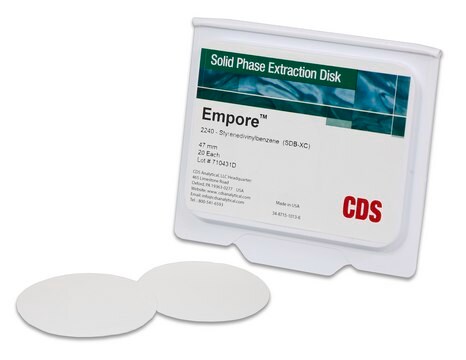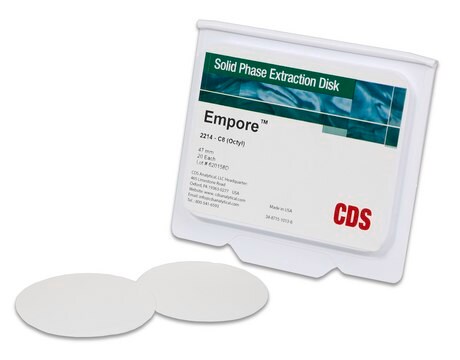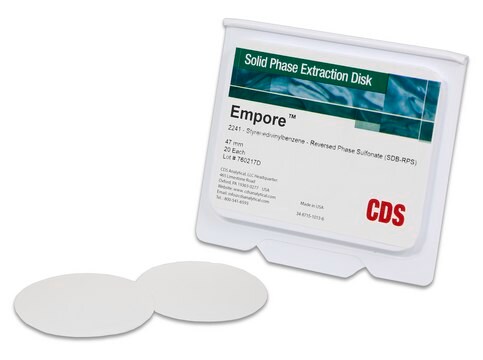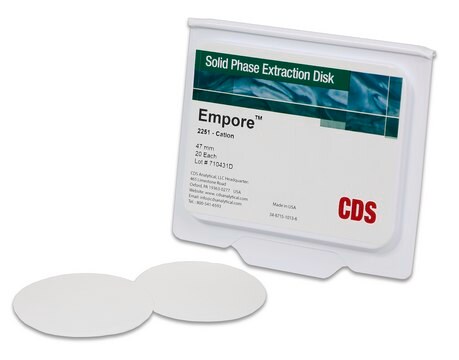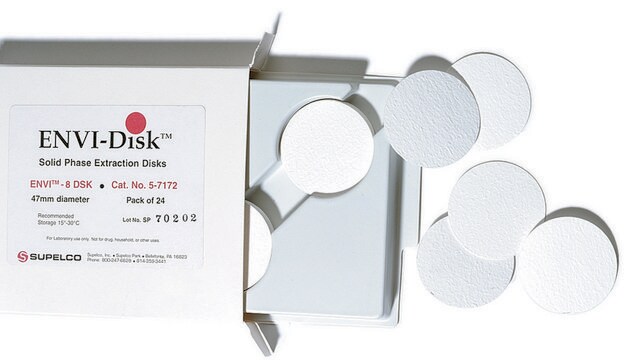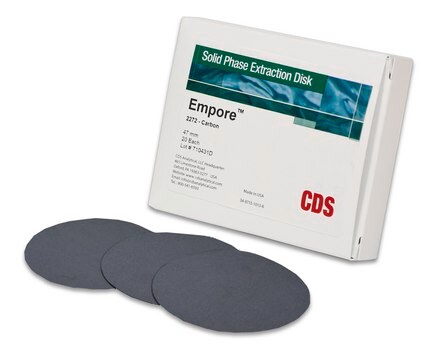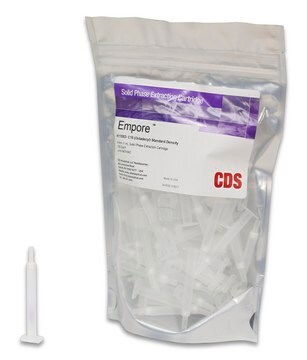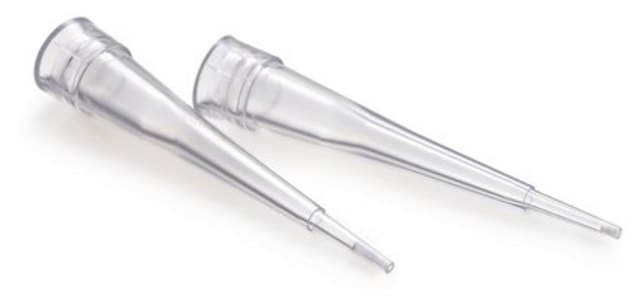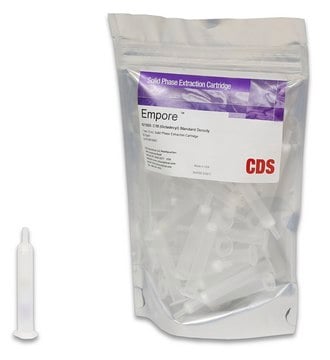66883-U
Empore™ SPE Disks
matrix active group C18, diam. 47 mm, pk of 20
Recommended Products
description
C18
product line
Empore™
packaging
pk of 20
manufacturer/tradename
CDS Analytical 98-0604-0217-3
technique(s)
solid phase extraction (SPE): suitable
diam.
47 mm
membrane thickness
0.5 mm
matrix active group
C18
particle size
12 μm
Looking for similar products? Visit Product Comparison Guide
Related Categories
General description
The Empore line of SPE disks comprises of the most complete line of SPE disks for extracting large volumes of aqueous samples. The product line ranges from time-tested C18 to unique phase chemistries such as carbon and the highly polar Oil & Grease disk. The disks are ideal for environmental analysis where 1 L sample volumes are not uncommon and provide an efficient alternative to LLE.
Save Time & Money:
- Reduced SPE Bed Mass = Reduced SPE Solvent & Elution Volumes
- Minimize SPE eluate evaporation time
- Potentially allows for direct injection of the SPE eluate
- Dense & Uniform Extraction Medium = No SPE Channeling and Voiding
- Efficient mass-transfer kinetics allow for faster flow rates
- Eliminate SPE fines improving column and instrument life
Application
- EPA Method 506 - Phthlate & Adipate Esters
- EPA Method 508.1 - Chlorinated Pesticides, Herbicides and Organohalides
- EPA Method 525.2 - Semi-Volatile Organic Compounds
- EPA Method 532 - Phenylurea Pesticides
- EPA Method 550.1 - PAHs
- EPA Method 553 - Benzidines and Nitrogen-Containing Pesticides
- EPA Method 554 - Carbonyl Compounds
- EPA Method 555 - Chlorinated Acids
- 608ATP3M0222 - Organochlorine Pesticides and PCBs
- 1613B - Dioxins and Furans
- 3535 - Organichlorine Pesticides & Phthalate Esters
- 8330A - Nitroaromatics & Nitroamines
- 8095 - Explosives
- 8323 - Organotins
- 8321b - Solvent extractable non-volatile compounds
- Dioxin DLM01.1 - Octo-chlorinated Dibenzo-p-dioxins (CDDs) and Dibenzofurans (CDFs)
Legal Information
Disclaimer
Storage Class Code
11 - Combustible Solids
WGK
WGK 3
Flash Point(F)
Not applicable
Flash Point(C)
Not applicable
Certificates of Analysis (COA)
Search for Certificates of Analysis (COA) by entering the products Lot/Batch Number. Lot and Batch Numbers can be found on a product’s label following the words ‘Lot’ or ‘Batch’.
Already Own This Product?
Documents related to the products that you have purchased in the past have been gathered in the Document Library for your convenience.
Difficulty Finding Your Product Or Lot/Batch Number?
How to Find the Product Number
Product numbers are combined with Pack Sizes/Quantity when displayed on the website (example: T1503-25G). Please make sure you enter ONLY the product number in the Product Number field (example: T1503).
Example:
Additional examples:
705578-5MG-PW
PL860-CGA/SHF-1EA
MMYOMAG-74K-13
1000309185
enter as 1.000309185)
Having trouble? Feel free to contact Technical Service for assistance.
How to Find a Lot/Batch Number for COA
Lot and Batch Numbers can be found on a product's label following the words 'Lot' or 'Batch'.
Aldrich Products
For a lot number such as TO09019TO, enter it as 09019TO (without the first two letters 'TO').
For a lot number with a filling-code such as 05427ES-021, enter it as 05427ES (without the filling-code '-021').
For a lot number with a filling-code such as STBB0728K9, enter it as STBB0728 without the filling-code 'K9'.
Not Finding What You Are Looking For?
In some cases, a COA may not be available online. If your search was unable to find the COA you can request one.
Our team of scientists has experience in all areas of research including Life Science, Material Science, Chemical Synthesis, Chromatography, Analytical and many others.
Contact Technical Service